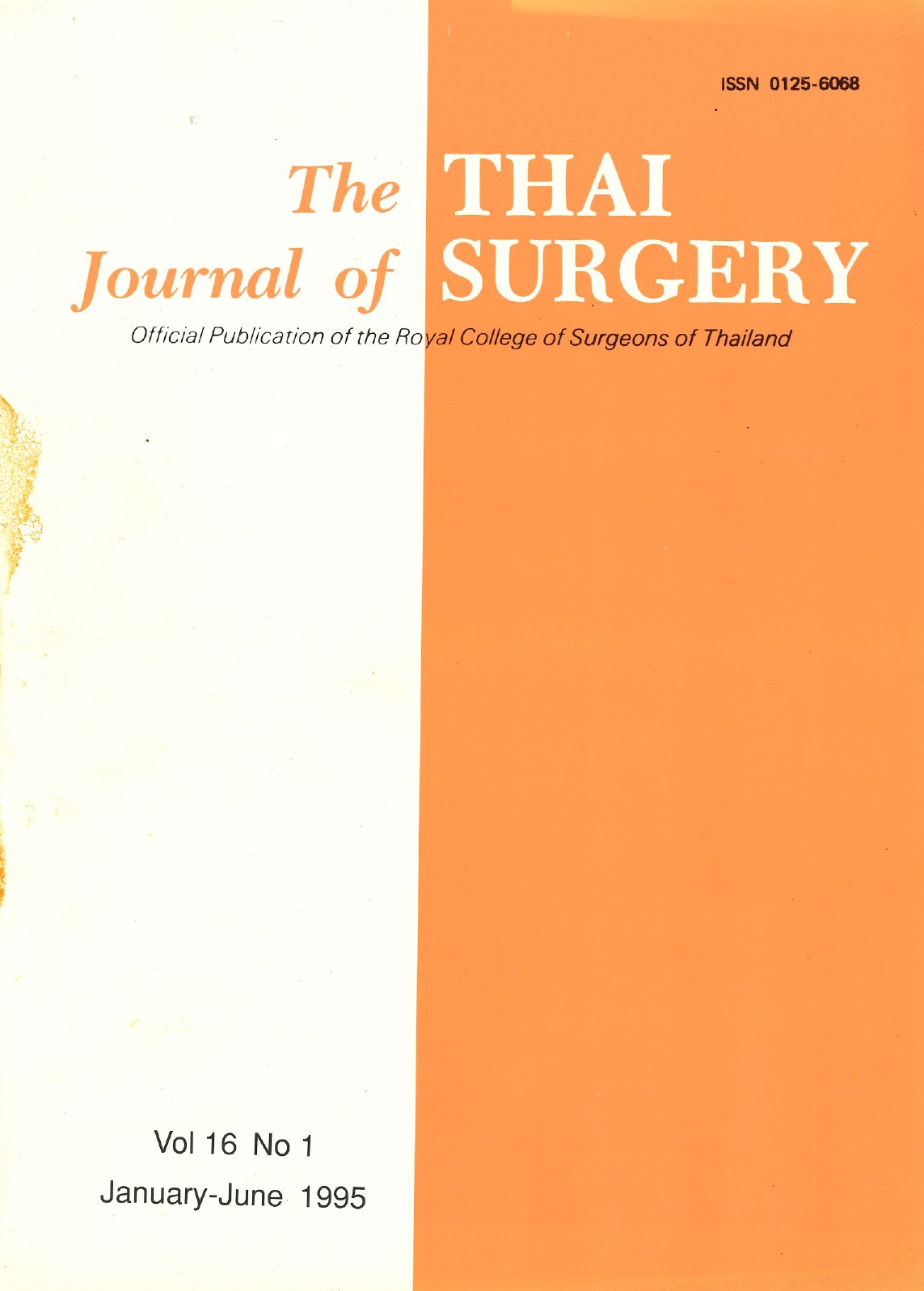Seroprevalence Rate of the Human Immunodeficiency Virus Infection in Surgical Patients
Abstract
All patients (age>14 yr) admitted to the surgical department of Vajira Hospital, between January 1991 and December 1993 were evaluated for HIV infection within the first 24 hours of admission. 'This study was aimed to establish the incidence of HIV in the surgical patients by grouping into 28 subgroups according to their subspecialties, type of admission (emergency or elective) and sex. Twenty thousand and nineteen patients underwent HIV antibody assay, of whom 277 had positive results with confirmation by Western blot analysis (1.38%). Out of 277 cases, 237 were males (85.56%) and 40 were females (14.44%), Accident and emergency accounted for 79.42 per cent of all the cases.
References
2. Smyser MS, Bryce J, Joseph JG. AIDS-related knowledge, attitudes, and precautionary behaviors among emergency medical professionals. Public Health Rep 1990; 105:496-504.
3. Meyer KB, Pauker SG. Screening for HIV: can we afford the false positive rate? N Engl J Med 1987;317:238-41.
4. Schecter WP. Precautions in the operating room for HIV-infected patients and patients with hepatitis. In: Howard FJ, ed. Infections Risks in Surgery. Norwalk, Appleton & Lange 1991:97.
5. Henderson DK, Ramey BJ, Willy M, et al. Risk for occupational transmission of human immunodeficiency virus type 1 (HIV-1) associated with clinical exposure. Ann Intern Med 1990;113:740-6
6. Pugliese G, Lanpinen T. Prevention of human immuno-deficiency virus infection; our responsibilities and health care professionals. Am J Infect Control 1989; 17:1-22.
7. HIV infection surveys in a blood donor group (June 1993 and December 1993) Department of Epidemiology, Ministry of Public Health, Thailand, 1994.
8. Acquired immune-deficiency syndrome (AIDS): precautions for clinical and laboratory staffs. MMWR 1982; 31:577-80.
9. Update: human immunodeficiency virus infections in health-care workers exposed to blood of infected patients. MMWR 1987;36:285-9.
10. Surgical management of HIV infected patients. Subcommittee, The Royal College of Surgeons of Thailand. RCST Bulletin 1994 (April):1-3.
11. Kelen GD, Fritz S, Qaguish B, et al. Unrecognized human immunodeficiency virus infection in emergency department patients. N Engl J Med 1988;318:1645-50.
12. Baker JL, Kelen GD, Sivertson KT, Quinn TC. Unsuspected human immunodeficiency virus in critically ill emergency patients. JAMA 1987:257:2609-11.
13. Kelen GD, DiGiomana T, Bisson L, et al. Human immunodeficiency virus infection in emergency department patients. JAMA 1989;262:516-22.
14. Robert LM, Bell DM. HIV transmisson in the health - care setting: Risks to health - care workers and patients. Infect Dis Clin North Am 1994;8:319-30.
Downloads
Published
How to Cite
Issue
Section
License
Articles must be contributed solely to The Thai Journal of Surgery and when published become the property of the Royal College of Surgeons of Thailand. The Royal College of Surgeons of Thailand reserves copyright on all published materials and such materials may not be reproduced in any form without the written permission.



